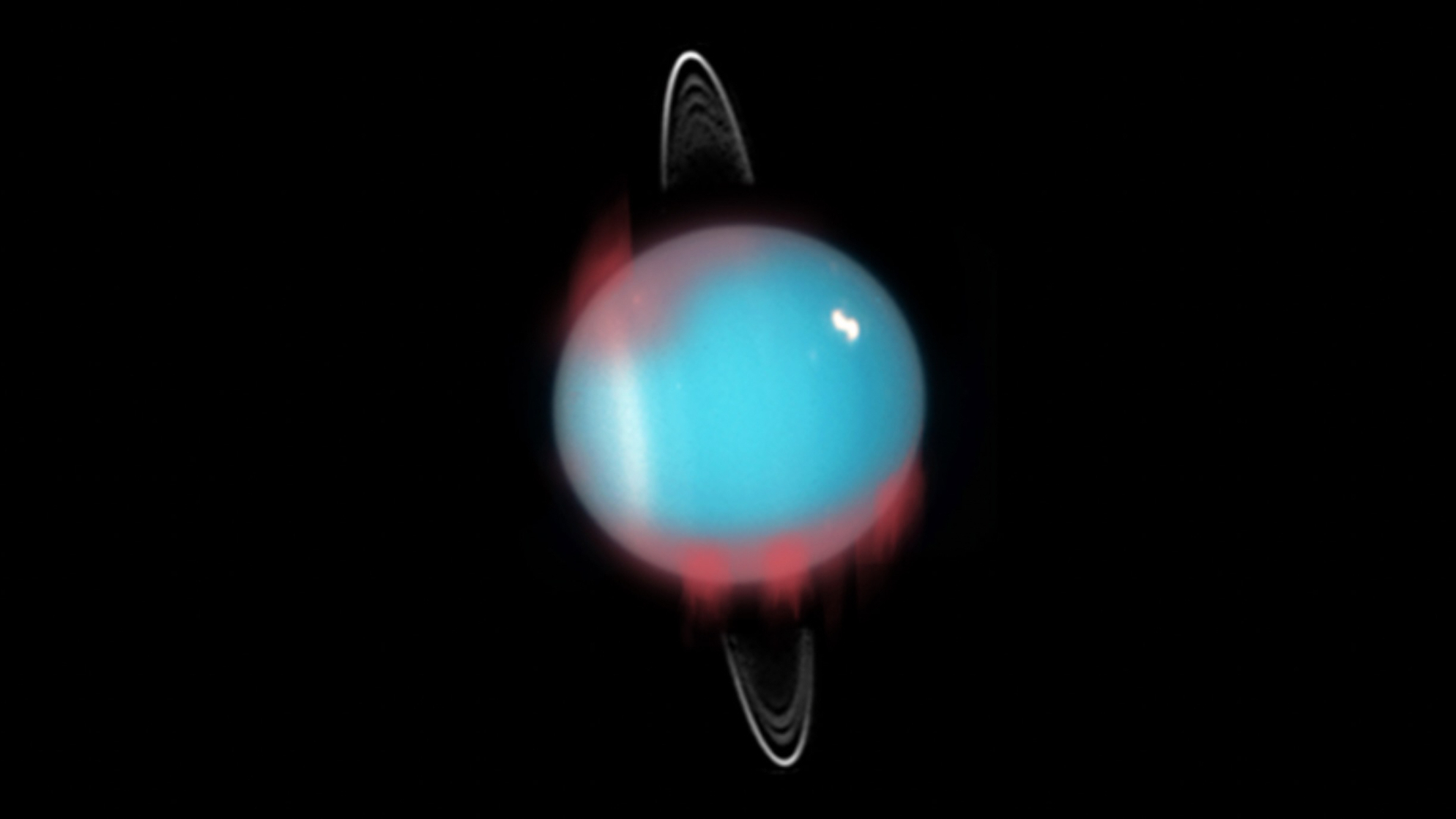Stunning light shows on Uranus and Saturn may soon draw James Webb Space Telescope's eye
Two projects will look at the auroras of these distant giant planets to discover what processes make them tick.

The James Webb Space Telescope (JWST) is set to begin investigating the spectacular light shows of solar system giants Uranus and Saturn.
Two separate teams of astronomers at the University of Leicester will use the $10-billion space telescope to study auroras over the gas giant Saturn and the frigid ice giant Uranus. The aim will be to explain in greater detail the processes that create these polar light shows over different planets.
"The JWST is already changing how we perceive the universe, from the solar system, our very own cosmic backyard, to the first galaxies formed at the beginning of time," Henrik Melin from the University of Leicester School of Physics and Astronomy who will lead the Uranus investigation, said in a statement. "I am thrilled to have been awarded time on this remarkable observatory, and this data will fundamentally shape our understanding of both Saturn and Uranus.”
Related: 3 tiny new moons found around Uranus and Neptune — and one is exceptionally tiny
Auroras are familiar to skywatchers over Earth as the stunning Northern Lights and Southern Lights, which can be seen along the poles of our planet when they appear.
These light shows are generated over Earth when charged particles that stream from the sun's solar wind strike our planet's protective magnetic field, known as the magnetosphere. These particles travel down magnetic field lines and stream out behind Earth — but, as they do this, they interact with particles in our atmosphere, creating glowing light.
When the sun blasts out high volumes of stellar plasma in so-called coronal mass ejections, auroras are more prominent and can be seen at lower latitudes over Earth.
Breaking space news, the latest updates on rocket launches, skywatching events and more!
Though auroras have been seen over other solar system planets before, and they should be possible around any planet with an atmosphere and magnetic field, less is known about these alien light shows.
Currently, relatively little is known about the auroras of Uranus, an ice giant with an atmosphere of water, ammonia and methane.
It was actually only last year, after three decades of investigation, that a research team from the University of Leicester School of Physics and Astronomy — led by Ph.D. student Emma Thomas — confirmed an infrared aurora around Uranus.
Because of a past impact with a roughly Earth-sized body, Uranus is tilted at a 97.77-degree angle. This means that its poles are orientated almost directly toward and away from the sun, and its auroras are positioned around what would normally be the equator for a solar system planet.
As Melin and his colleagues use the JWST to observe the auroras of Uranus, which is the seventh planet from the sun, they will investigate something suggested by this previous discovery of Uranian auroras: Are the auroras of this distant planet responsible for keeping it warmer than expected?
"The temperature of all the gas giant planets, including Uranus, are hundreds of degrees Kelvin/Celsius above what models predict if only warmed by the sun, leaving us with the big question of how these planets are so much hotter than expected," Thomas said last year. "One theory suggests the energetic aurora is the cause of this, which generates and pushes heat from the aurora down towards the magnetic equator."
The JWST study of Uranus will begin early in 2025; it will capture images of the ice giant over a single day for the planet, which lasts around 17 Earth hours. This should allow the team to map auroral emissions across a whole rotation of Uranus' magnetic field.
The scientists will also aim to discover if emissions are produced when the Uranian magnetic field interacts with the solar wind, as happens over the Earth, or if interacting charged particles come from sources within the system similar to how Jupiter creates its auroras. There is also the possibility that Uranus' auroras are created as a combination of these phenomena, just as Saturn's auroras seem to be generated.
The JWST Saturn aurora project, led by Boston University Center for Space Physics scientist Luke Moore, will observe the gas giant's northern auroral region for an entire 10.6-hour Saturnian day. This will allow the team to monitor how the temperature of this region changes as the gas giant rotates.
By revealing Saturn's atmospheric auroral energies for the first time, the team hopes to learn more about the sources of charged particles within the gas giant's atmosphere that drive its auroras.
Both JWST giant planet studies will be conducted using the powerful space telescope's highly sensitive Near-Infrared Camera (NIRCam) instrument.
Once these findings are in hand, scientists can better understand the processes that create auroras in the solar system and the role these mechanisms have on Earth in particular. Perhaps the results can help astronomers glean information about auroras around planet beyond the system too: Extrasolar planets, or "exoplanets."
“A majority of exoplanets discovered so far fall in the sub-Neptune category and hence are physically similar to Neptune and Uranus in size. This may also mean similar magnetic and atmospheric characteristics too," Thomas said. "By analyzing Uranus's aurora, which directly connects to both the planet's magnetic field and atmosphere, we can make predictions about the atmospheres and magnetic fields of these worlds and hence their suitability for life."

Robert Lea is a science journalist in the U.K. whose articles have been published in Physics World, New Scientist, Astronomy Magazine, All About Space, Newsweek and ZME Science. He also writes about science communication for Elsevier and the European Journal of Physics. Rob holds a bachelor of science degree in physics and astronomy from the U.K.’s Open University. Follow him on Twitter @sciencef1rst.



